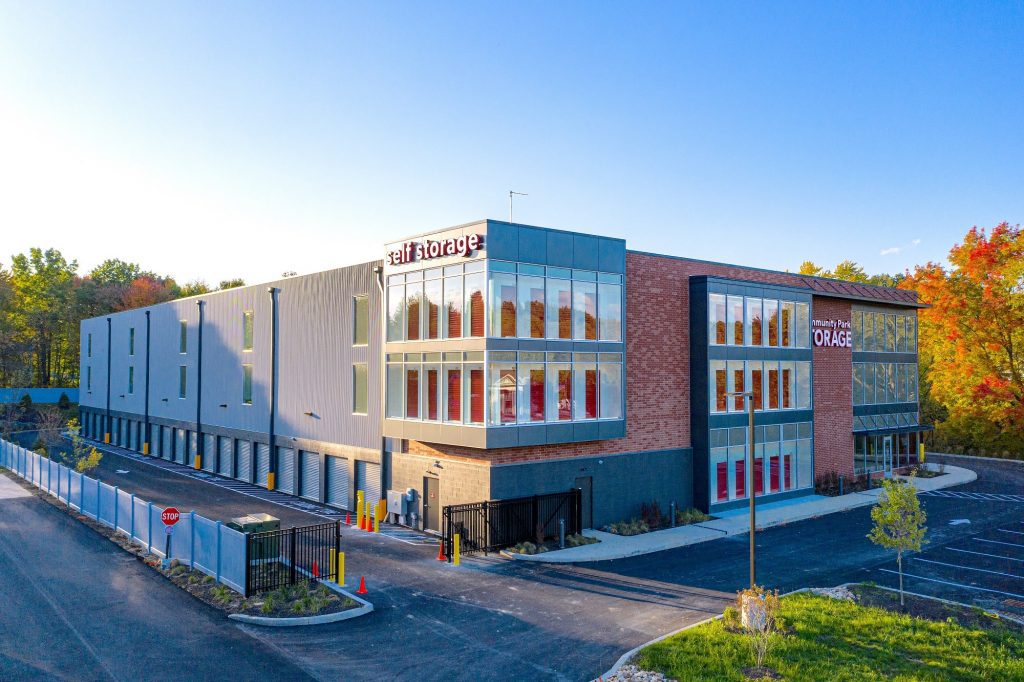Temperature-Control vs. Climate-Control: Understanding the Differences
When it comes to preserving your belongings, not all storage solutions are created equal. For many, the terms “temperature-controlled” and “climate-controlled” might seem interchangeable, but they signify two distinct types of storage environments. While both are superior to traditional storage in several respects, understanding their specific differences is crucial for anyone looking to protect their items optimally. At Community Park Self Storage in Cranberry Township, PA, we’re committed to helping our customers make informed decisions. In this guide, we’ll dive into the nuances between temperature-controlled and climate-controlled storage, highlighting their benefits and potential applications. So, let’s get started and ensure your cherished belongings receive the care they deserve.
What is Temperature-Controlled Storage?
Temperature-controlled storage is designed to maintain a stable temperature range within the storage unit, regardless of external weather conditions. Typically, these units will keep temperatures between 55°F and 85°F (13°C to 30°C), ensuring that stored items are not subjected to extreme cold or heat.
The main goal of temperature-controlled storage is to combat temperature fluctuations that could potentially harm certain items. By doing so, these units prevent damage from occurrences such as:
- Warping: Excessive heat can cause materials like wood or vinyl to warp.
- Cracking or Splitting: Drastic temperature changes can lead to the expansion and contraction of materials, causing them to crack or split.
- Mold and Mildew Growth: High temperatures can create an environment conducive to the growth of mold and mildew, especially when paired with high humidity.
- Degradation of Materials: Items like electronics, leather, or certain chemicals may degrade if exposed to consistent high or low temperatures.
However, while temperature-controlled storage units provide protection against temperature extremes, they don’t necessarily regulate humidity levels. This brings us to the topic of climate-controlled storage, which offers a more comprehensive solution. For those curious about the technical specifics and science behind temperature regulation, Energy Star provides insightful resources on the matter.
What is Climate-Controlled Storage?
Climate-controlled storage takes environmental protection a step further than temperature-controlled units. As the name suggests, these units control both temperature and humidity levels, offering a dual-layered protective environment for stored items.
Let’s break it down:
- Temperature Regulation: Similar to temperature-controlled units, climate-controlled storage maintains a consistent temperature, typically between 55°F and 85°F (13°C to 30°C). This consistency ensures protection against the damaging effects of extreme cold or heat.
- Humidity Control: Humidity is a crucial aspect of environmental control, especially in regions that experience high moisture levels. Climate-controlled units typically keep humidity levels between 30% and 50%. By doing so, they prevent the following issues:
- Mold and Mildew Growth: While temperature control can reduce the risk, controlling humidity is the most effective way to prevent the growth of mold and mildew.
- Paper Degradation: Important documents, books, and photos can become brittle, discolored, or stuck together in high humidity.
- Metal Corrosion: Items made of metal, like instruments or tools, can corrode or rust in moist conditions.
- Wood Damage: Excessive moisture can cause wooden items to swell, warp, or rot.
- Air Quality: An often-overlooked benefit of climate-controlled storage is the improved air quality. These units often circulate the air, which can reduce the amount of dust and debris that might settle on your stored belongings.
Climate-controlled storage is especially beneficial for items that are sensitive to humidity changes, such as artwork, antiques, electronics, and musical instruments.
Key Differences Between Temperature and Climate Control
When choosing between temperature-controlled and climate-controlled storage, understanding their key differences is vital to making an informed decision. Let’s delve into the primary distinctions:
Environmental Control Scope:
- Temperature-Controlled: These units solely focus on maintaining a steady temperature, typically ranging from 55°F to 85°F. The main goal is to shield items from extreme temperature variations that can cause damage.
- Climate-Controlled: Beyond just temperature, these units also manage humidity levels, keeping them between the optimal 30% to 50% range. The dual control over temperature and moisture offers enhanced protection against potential environmental hazards.
Protection Level:
- Temperature-Controlled: Protects belongings mainly from temperature extremes. This is suitable for items that are sensitive to temperature but not necessarily to humidity.
- Climate-Controlled: Offers comprehensive protection from both temperature extremes and moisture-related issues, including mold, mildew, rust, warping, and more.
Cost Implications:
- Temperature-Controlled: Generally, these units are less expensive than climate-controlled units because they offer a narrower scope of protection.
- Climate-Controlled: Due to the added benefit of humidity control and the technology involved, these units often come at a slightly higher rental cost. However, the additional expense can be justified by the advanced protection they offer.
Ideal For:
- Temperature-Controlled: Items such as furniture, clothing, and other belongings that primarily require protection from temperature swings.
- Climate-Controlled: Sensitive items like artwork, electronics, musical instruments, wine collections, important documents, and antiques that can be damaged by not only temperature fluctuations but also varying humidity levels.
Air Quality:
- Temperature-Controlled: Doesn’t particularly focus on air quality, though the regulated temperature might somewhat reduce dust and debris.
- Climate-Controlled: Offers better air quality due to frequent air circulation, which can minimize the amount of dust and other airborne particles settling on your items.
Locations and Geographic Considerations:
- Temperature-Controlled: Suitable for areas where temperature fluctuations are the primary concern.
- Climate-Controlled: Ideal for regions with high humidity or places that experience both hot and cold extremes. If you’re curious about the average humidity levels in your area, the United States Environmental Protection Agency (EPA) provides valuable regional data.
In essence, while both types of storage offer vital protection, your specific needs and the items you intend to store will dictate the best choice for you.
Practical Applications: When to Use Which?
Selecting between temperature-controlled and climate-controlled storage doesn’t have to be confusing. The choice often boils down to what items you plan to store and the environment in which you live. Here’s a guide to help you make a practical decision:
Electronics and Appliances:
Devices like televisions, computers, refrigerators, and microwaves are sensitive to both temperature extremes and humidity. Storing in a climate-controlled unit is recommended to prevent malfunctions or permanent damage.
Art and Collectibles:
Items such as paintings, sculptures, stamps, or comic book collections can degrade quickly under unfavorable conditions. The climate-controlled environment is best to maintain their value and condition.
Musical Instruments:
Instruments like guitars, violins, and pianos are especially susceptible to both temperature changes and humidity. A climate-controlled unit is crucial to ensure they remain in tune and undamaged.
Wine Collections:
Wine is sensitive to temperature fluctuations and can spoil if not stored correctly. While temperature-controlled storage can suffice, a climate-controlled unit will ensure that both temperature and humidity remain constant, which is optimal for wine preservation.
Documents and Photos:
Important paperwork, photographs, and books can yellow, fade, or get moldy if exposed to moisture. Here, a climate-controlled unit offers the best protection against deterioration.
Household Items and Clothing:
For everyday items like furniture, clothing, or other general household goods that aren’t particularly sensitive to humidity but need protection from extreme temperatures, temperature-controlled storage often works just fine.
Tools and Machinery:
Metal tools and machinery can rust when exposed to moisture. If you’re storing these types of items, especially long-term, considering a climate-controlled unit might be beneficial to prevent rust and degradation.
Geographic Considerations:
For those living in areas with mild climate changes and little humidity, temperature-controlled units might be adequate. However, in regions with significant seasonal changes, high humidity in summers, or chilly, damp winters, climate-controlled storage is the way to go.
Remember, while it might be tempting to save a few dollars by choosing the less expensive option, it’s essential to consider the potential replacement cost or emotional value of the items you’re storing. In many cases, investing in the right storage environment upfront can save you considerable heartache and expense in the long run.
Making the Right Choice for Your Belongings
When it comes to choosing between temperature-controlled and climate-controlled storage units, understanding the specific needs of your items is crucial. While both options offer protection against extreme temperature fluctuations, climate-controlled units add an extra layer of security by managing humidity levels.
For those who value their belongings, especially items with sentimental or high monetary value, investing in the right type of storage environment can make all the difference. It’s not just about safeguarding against physical damage, but also about preserving memories, investments, and treasures that mean the most.
Community Park Self Storage in Cranberry Township, PA, is committed to providing the best options to suit your needs. Whether you’re looking for a place to store valuable artwork, cherished musical instruments, or just need a secure space for your household items, understanding the nuances between temperature and climate control can guide you to the perfect unit.
Remember, it’s always better to be proactive than regretful. Make an informed decision today to ensure your prized possessions remain in pristine condition for years to come.
Find more helpful self storage tips on our blog and Facebook page!

Tim Glasow
About the Author: Tim is an SEO Strategist at Storage Asset Management in York, PA. He is a self-storage industry specialist who has written about everything from storage advice and helpful resources to industry trends. In his free time, Tim enjoys sampling craft beer and exploring the local music scene.


